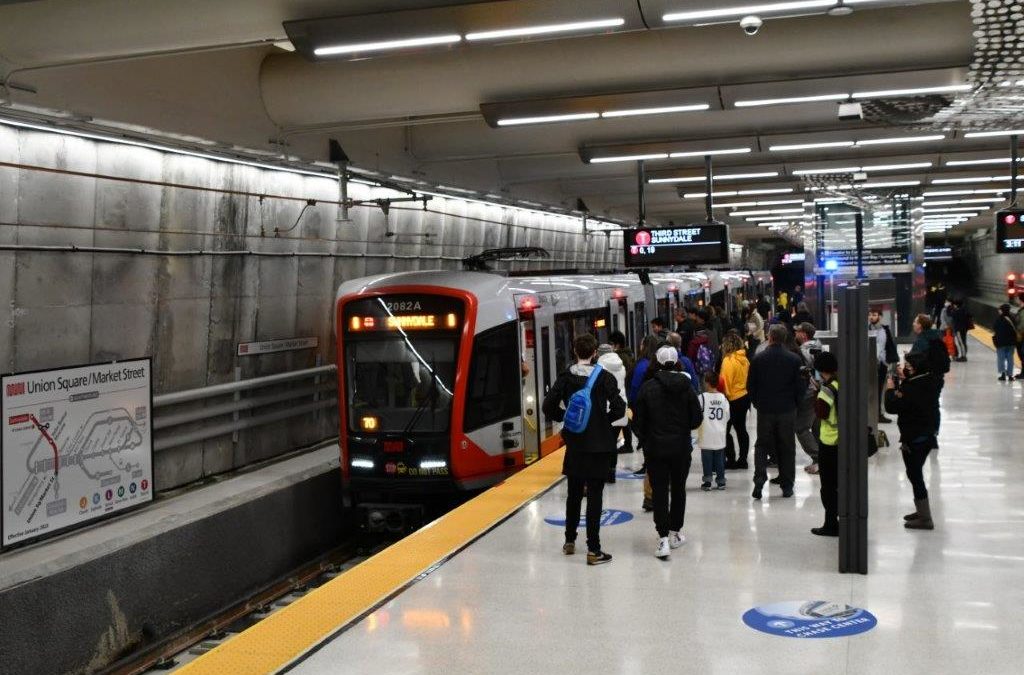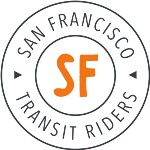“Welcome to 2023, Riders! We cannot wait to accomplish many more transit goals this year.”
Ushering into 2023, are both successes and questions about what is to come. The Central Subway connection to the T-Line opened with fanfare on the Union Square concourse and rightly so. As John King writes: “Ride the 49-Van Ness/Mission bus a few times, and you can start to imagine Van Ness as a place unto itself, one worth exploring. The Central Subway is totally different, offering four perspectives that distill the facets of a diverse city. Both, though, offer new ways to think about the city of tomorrow. The long-accepted spatial definitions of San Francisco are fading. And for more and more people, so is the notion that the only real way to get from one point to the next is by automobile.”
The Central Subway does indeed cement connections for communities as distanced as Chinatown and Visitacion Valley. It offers access to jobs, to clean air. And it does so in style (thanks to the 2 percent funds earmarked for state-of-the-art installations) and with a creative mindset about raising funds (over a billion dollars), possible only with the community cohesion behind it all. In fact, I was struck by the sense of ‘Community’ as an echo chamber in all the celebratory speeches that were made at the event.
As much as I appreciated witnessing this new feat within our transit system in San Francisco, I was also reminded about San Francisco Transit Riders’ own engagement in the Bayview related to the needs to the residents there. Based on the 200 surveys we did at street fairs, at bus and rail stops, and at farmer markets last year, we have some understanding of resident concerns about how “trains and buses are frequently unreliable”, “street conditions are uneven”, and “travel feels unsafe”. Community members would like to rely on public transit but, unfortunately, in its poor state, many are forced to drive daily. The Central Subway connection is a good one but alas not a panacea of the transit issues entrenched in the Bayview community. For one the community desires multiple transit options, just like the rest of the city. “What the neighborhood has now is not enough.” How and when do we address that?
The other issue about operations that had been looming high feels exacerbated in the recent abysmal budget update from the State especially given the growing strain on local resources. Can we be hopeful of efforts (aka the Survive and Thrive campaign) corralling under the Metropolitan Transportation Commission leadership to identify short to immediate relief for transit operations from the State until the region identifies a long-term revenue source? Can we align new funding sources that could be less reliant on fares? And what about the Federal leadership in this regard? Transit Center’s critique of the blueprint that was released last week is queasy at best: “Sorry to be the bearer of bad news, but there’s no way we’re eliminating transportation emissions without a big new commitment to expanding transit *service*, which is conspicuously missing from this plan.”
There is work carved out for the San Francisco Transit Riders as advocates on both these accounts. Making resident needs in the Bayview visible will be as important for us as strategizing collectively on the transit service questions. It would be ideal if we could unite the fronts of residents and transit agencies alike and if, as Anand Giridharadas so eloquently puts it in The Persuaders, our movement could “have a savvier relationship to power and to translating rage into programs.” Quoting Black Lives Matter founder Alicia Garcia, Anand writes, “We have to protest and also have to step in to lead and govern.”
We also have to “understand people” deeply, and “give them answers to the question of why am I suffering?” Our “movement of progress” must not only draw people in and make them feel heard, but also allow people to learn and begin “to notice the ways in which their distinct struggles could flow together.”


